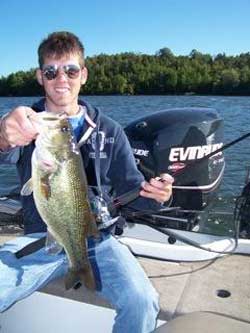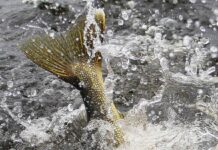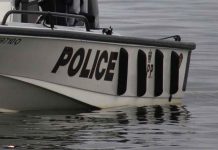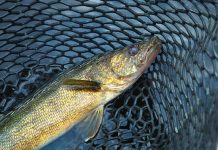
A Comprehensive Approach to Pre-Season Boat Prep
THUNDER BAY – Across Northwestern Ontario as spring slowly approaches, fishing and boating is coming to the forefront of many outdoor enthusiasts. As the snowmobile and the ice auger and ice fishing gear is getting stored, now is the time to make sure that your boat and motor are ready for the spring and summer season and lots of good fun and fantastic memories.
Our friends at The Fishing Wire offer this valuable information on the move forward to spring and getting your boat ready for summer.
Brian Rice is a charter fishing captain who plies the inshore and offshore waters off northern New Jersey with his 2006 31-foot Contender® center console. The boat is powered by the original 2006 Yamaha F250 outboards, and the hull and motors have over 2,200 hours of use on them without a major repair.
The boat has been fished hard, but sitting on the trailer in the warehouse, gleaming under three coats of wax as Rice finished up the process of getting it ready for the 2014 fishing season, it looked to be in excellent condition. Brian walked us through the thorough service program he follows before splashing the boat for another season of charters and fun fishing with his family and friends.
“The Jersey Devil is a great boat, and it’s powered by the most dependable outboards I have ever owned,” Rice said. “But dependability is a two-way street. Yamaha builds a great product, but if you don’t follow the manufacturer’s service requirements at the specified service intervals, you can’t expect to get the kind of longevity I have gotten from mine. It’s that simple.”
Rice’s spring pre-season prep work goes well beyond the outboards. The larger the boat, the more things there are to inspect, service and replace if necessary. The older the boat, the more important these system checks are to avoid what could become serious problems once you start the season. If you live in warmer climates and use your boat year round, regardless of whether you keep it in the water, on a lift or a trailer, you should set aside a time once a year to do a full vessel inspection and service. It can actually save you a lot of money on unnecessary repairs in the long run.
“Since I put a significant amount of hours on my outboards each season, I probably replace service items more frequently than a more casual boater needs to,” Rice said. “But that’s just me. I hate to let things go that could come back to haunt me during the fishing season.
“I do a thorough inspection and servicing of the outboards and related systems from top to bottom before anything else. Be sure to drain the engine oil and lower unit lubricants when the boat comes out of the water at the end of the season and replace them. You do not want tired lubricants sitting in the engine over the winter, especially the lower unit. If you manage to get water in the lower unit oil, which can happen as a result of a seal being damaged from something as simple as picking up some fishing line behind the prop, you don’t want it left in there over the winter. The discolored oil will tell you if you have a seal problem, too.”
Below is Captain Rice’s detailed spring checklist for his boat.
Engine and Fuel System Checklist
Battery switches are durable, but they can wear out over years of use-check to make sure they’re fully functional before the boating season begins.
- Replace all engine fuel and oil filter (if this wasn’t done previously before storage).
- Inspect and clean spark plugs. Replace when your manufacturer says it’s time.
- Inspect grease fittings, replace if necessary, then add grease as needed.
- Remove props and check the lower unit seal.
- Grease the prop shaft, replace the cotter pin when reinstalling.
- Drop the lower unit, inspect the water pumps, replace if necessary (Rice replaces his annually).
- Inspect engine zincs and replace as needed.
- Inspect grounding cables on the engine mounting bracket. These can break or become corroded. Clean or replace as needed.
- Inspect battery cable connection to engine, wire brush clean and coat with dielectric grease.
- Inspect hydraulic steering ram end caps, replace seals if leaking. Replace caps if corrosion is present.
- Inspect power trim and tilt ram end caps. Service if needed, coat with waterproof grease when done.
- Replace external canister fuel filters.
- Carefully inspect all fuel line hoses and priming balls for leaks, wear or weathering. This is particularly important with older boats as ethanol-blended fuels can cause a breakdown of pre-ethanol rated fuel lines.
- Inspect all connections in the fuel delivery system for any signs of leaks.
- Inspect fuel vent and fill tube to the tank if accessible.
Captain Rice recommends you use your nose when checking the fuel system. “If you can smell gas, investigate any potential cause carefully and be thorough in your inspection,” he said.
Trim Tabs
- Inspect the trim tabs, screws, bolts and rams. If you keep the boat in the water the trim tabs should be treated with an antifouling coating seasonally.
- Check the hydraulic cylinders for any sign of leakage.
- Inspect the hydraulic lines, the pump and fluid reservoir. Top off with the recommended fluid if needed.
Steering System
- Check hydraulic fluid on all boat systems that use hydraulics and top off with the recommended oil.
- Non-power assisted systems have a small fill cap on the pump body behind the steering wheel. Power assist systems are checked at the pump reservoir. Check fluid level and top off as needed.
- Inspect all hydraulic hose connections to be sure they are tight and there are no leaks.
- If it was necessary to remove any steering lines or replace the ram end caps at the engine, the system will have to be bled.
Electrical Systems
- Inspect the batteries. If corrosion is evident, remove and clean terminals with baking soda solution, clean cable ends and reconnect.
- Load test all batteries.
- Check the battery switches to be sure they are functional. Older models can wear out.
- Inspect battery cable connections to each switch.
- Check breakers and/or fuse panels.
- Inspect bus bars for corrosion. Wire brush clean if needed.
- Check all helm switches including trim tabs, power trim and tilt to be sure they are operational.
- Check all lights. If you’ve planned on switching over to LEDs, this is a good time
- Check all navigational, sonar and communications electronics to be sure they are operational. Pay specific attention to connections to be sure they are tight. Radio antenna connections are notorious for corroding.
- Inspect all wires and cables.
General Vessel Systems
- Anything that has a lube port should be located, cleaned and lubed in spring.
- Inspect all thru-hull fittings from inside and outside the boat.
- Check all thru-hull shut-off valves to be sure they are working. Lubricate if necessary, replace if frozen.
Inspect all hoses from thru-hull fittings. Be sure they are all double-clamped and that the clamps are not corroded. - Check bilge pumps and automatic bilge pump switches.
- Check additional pumps (washdown; macerator; etc.).
- Inspect your anchor line for wear around the thimble linking it to the chain or anchor. Check the shackles to be sure the screw is not rusted tight. Remove the line from the anchor locker and inspect. Clean anchor locker while empty.
- Inspect outer hull for chips, dings, gelcoat blisters. Repair as needed.
- Inspect hardtop/t-top pipes as welds can break with age and hard vessel use.
- Inspect places where wires enter and exit the piping in case grommets are bad or missing, which can cause chafing.
- Inspect the sanitation system (head and holding tanks) where applicable to be sure they are working. Remove antifreeze if it was winterized.
- Remove antifreeze from the freshwater system where applicable, flush with clean, fresh water and refill.
Safety Equipment
- Make sure your boating safety gear is in top shape, ready to go if you ever need it.
- Inspect all PFDs and throwable life rings aboard for mildew. Clean if needed. For inflatable PFDs, check charging system.
- Inspect all flares, paying attention to expiration dates. If expired, purchase replacements.
- Inspect the life raft, checking for required inspection date. Bring it in to a certified service facility if needed.
- Check to see if fire extinguishers are fully charged and take a look at their physical condition.
- Conduct a safety check of all EPIRB and PLB units to be sure they are operational and to check the battery integrity. Review the literature to see when battery replacement is recommended by the manufacturer.
- Conduct a safety check of the emergency S.O.S. system on the VHF radio if applicable.
“The larger the boat, the more systems to work your way through, but consider it an insurance policy for trouble-free boating in the coming year,” said Rice. “The track record of the Jersey Devil has been amazingly trouble-free, and I believe it is because of the manner in which the boat is maintained.
“After I’ve gone through the list and checked off each item as completed, the boat is thoroughly washed and waxed inside and out, topped off with fresh fuel and splashed for another year of fishing. Take good care of your boat. It’s important for boating safety and it’s too big an investment to ignore.”
Always make sure to consult your outboard and boat owner’s manuals for additional information about getting your boat ready for spring.










